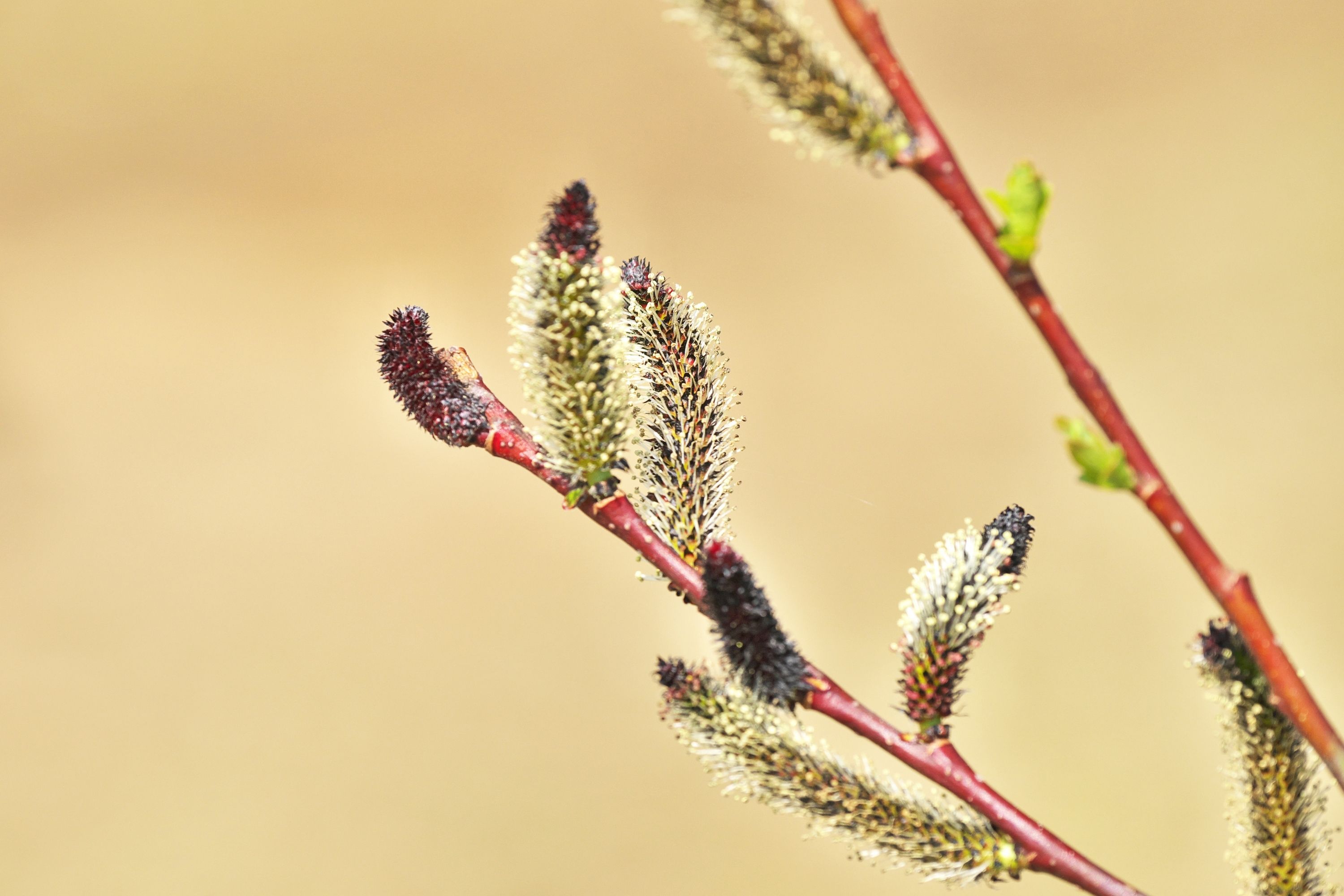Black willow
(Salix nigra)

Description
Salix nigra, the black willow, is a species of willow native to eastern North America, from New Brunswick and southern Ontario west to Minnesota, and south to northern Florida and Texas. Salix nigra is a medium-sized deciduous tree, the largest North American species of willow, growing to 10–30 m tall, exceptionally up to 45 m, with a trunk 50–80 centimeters (20–30 in) diameter. The bark is dark brown to blackish, becoming fissured in older trees, and frequently forking near the base. The shoots are slender and variable in color from green to brown, yellow or purplish; they are (like the related European Salix fragilis) brittle at the base, snapping evenly at the branch junction if bent sharply. The foliage buds are 2–4 millimetres (1⁄16–3⁄16 in) long, with a single, pointed reddish-brown bud scale. The leaves are alternate, long, thin, 5–15 centimeters long and 0.5–2 centimeters broad, usually somewhat falcate, dark, shiny green on both sides or with a lighter green underside, with a finely serrated margin, a short petiole and a pair of small stipules. It is dioecious, with small, greenish yellow to yellow flowers borne on catkins 2.5–7.5 centimeters long in early spring at the same time as the new leaves appear. The fruit is a 5 millimeters capsule which splits open when mature to release the numerous minute, down-covered seeds. The leaves turn a lemon yellow in the fall. Salix nigra, the black willow, is a species of willow native to eastern North America, from New Brunswick and southern Ontario west to Minnesota, and south to northern Florida and Texas. It is also found in parts of Mexico, both south and west of the Rio Grande. While native to eastern North America, it has also been introduced along streams in the state of Utah. Salix nigra grows best in areas of full sun and wet or moist soils. Thus, it is typically found along streams and in swamps. Black willow is part of the Salicaceae, the willow family. The accepted name for black willow is: Salix nigra Marshall. Marshall, the "Father of American Dendrology", first described this taxon in 1785. Salix gooddingii is sometimes considered a variety of S. nigra as S. nigra var. vallicola Dudley; when recognized, this extends the range of S. nigra to western North America. However, the two are usually treated as distinct species. Some other related taxa and synonyms are S. nigra var. altissima, S. nigra var. brevijulis, S. nigra var. longifolia, S. nigra var. marginata, and S. nigra var. wardii.
Taxonomic tree:







